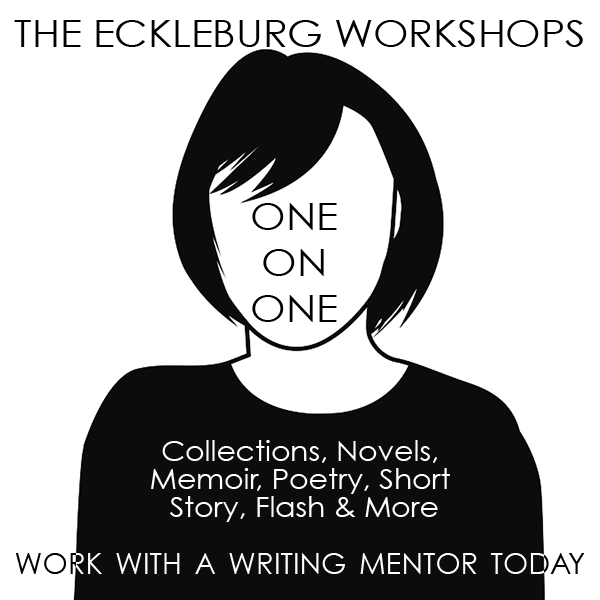protagonist
“Be a Sadist. No matter how sweet and innocent your leading characters, make awful things happen to them—in order that the reader may see what they are made of.” (Kurt Vonnegut on Writing)
Let your leading characters have flaws, even your protagonists. Force the flaws out of them. Let the reader experience these flaws. No one wants to hang out with a “perfect person.”
When we write fictional narrative, especially in our first drafts, we are often so caught up in the world of it, the massive and changing aspects of its relationships, that we cannot focus on one character at a time, not even our protagonist. This is a natural and necessary part of the first drafting phase. However, we must not stop there. At some point in the revision process, we focus on one character at a time so to better know each individual character. We all know this, but we don’t always do it to the level our characters deserve.
The Protagonist: Interviews & Background Checks
Say you had an important job for someone to do and you must hire someone new to do this important job. Would you hire just anyone? Would you grab some stranger off the street and give them a look over, identify hair color, eye color, a few gestures or habits then offer this person your important job?
No. You would do background checks, interviews, perhaps even tests and then after they’ve been on the job a few days, weeks, months… you would touch base and observe, identify whether this person is still a good fit or needs to go. If this person is a good fit, you’d not try to do his or her job. You would give this person the room he or she needs to shine. And you would support this person from your appropriate position.
Our characters are no different. You must interview them, hang out with them, observe them, analyze their performances, go to dinner with them, ask the intimate questions to which they don’t want you to know the answers. And you must do it all again and again. The first few drafts of a story are merely first dates, initial interviews. When you think you know them, you do it again. If you find, after writing this character and interviewing this character and interviewing this character repeatedly, that the character is worthy of their position, then you let the character tell you how they want to do the job within the overall story. To ascertain what this job is, you must pull out of the overall manuscript a bit, hold it lightly in your mind, while you schematically dissect the details of the character.
ON THE PROPER RELATIONSHIP WITH YOUR CHARACTER: In literary fiction, there is no room for writers to have proper and polite relationships with their characters. You need to know their dirty secrets and how far they are willing to go to realize their goals.
REMEMBER: In getting to know our characters, we aren’t looking to fill our expectations of what we think our characters must be, but rather, we are looking to discover our characters for what they are and what they want to be. And don’t be mislead. Just because you’ve given your characters birth, does not mean you know them. Your characters are hiding secrets and you must dig. Each decision you make about your character plants seeds for further secrets you have not yet discovered. As much as we think we drive this character development, at some point, characters will be in the drivers’ seats and this is when we know our characters are moving from two-dimensional to three-dimensional.
In this lesson, we’ll focus on your protagonist and bringing your protagonist to their fully three-dimensional realization.
What is a Protagonist?
The classic definition of a protagonist is the character who is the focus of the overall narrative and undergoes the most significant change. A literary protagonist is rarely ever considered to be morally “good.” Literary protagonists are complicated and will often challenge the reader’s concept of “good” and “bad.” Keep in mind that the best literary protagonists are usually also their own antagonists to some degree–i.e. person versus self.
You might have more than one protagonist, such as in Tom Perrotta’s novel, Little Children. In the above excerpt from the film adaptation, Sarah Pierce (Kate Winslet) and Brad Adamson (Patrick Wilson), navigate an uncomfortable dinner with their spouses. In this scene, how do the characters’ inner conflicts (person vs. self) unveil themselves to the viewer/reader?
Some Great Literary Characters
Do any of the below characters look familiar? Consider how some of these familiar characters compare to your character’s attributes. Some of these characters are obvious protagonists. Some are not. Some are a mix of both protagonist and antagonist, such as Patrick Bateman in American Psycho.
- Humbert Humbert, Lolita by Vladimir Nabokov
- Jean Val Jean and Fantine, Les Miserables by Victor Hugo
- Jane Eyre, Jane Eyre by Charlotte Brontë
- Unnamed Narrator, “Jesus’ Son” by Denis Johnson
- Mrs. Mallard, “The Story of an Hour” by Kate Chopin
- Beloved, Beloved by Toni Morrison
- Jay Gatsby, The Great Gatsby by F. Scott Fitzgerald
- Patrick Bateman, American Psycho by Bret Easton Ellis
- Bigger Thomas, Native Son by Richard Wright
- Orlando, Orlando by Virginia Woolf
- Huck Finn, Huckleberry Finn Mark Twain
- Kilgore Trout, Breakfast of Champions by Kurt Vonnegut
- Dorian Gray, The Picture of Dorian Gray by Oscar Wilde
- Victor Frankenstein, Frankenstein or A Modern Prometheus by Mary Wollstonecraft Shelley
- Charles Marlow, Heart of Darkness by Joseph Conrad
- Lily Bart, The House of Mirth by Edit Wharton
- Narrator, The Yellow Wallpaper by Charlotte Perkins Gilman
- & so many more. Below, you’ll see a section where you can discuss your favorite protagonist.
Protagonist Exercises
Below are two exercises, one is a schematic exploration and the other is a narrative exploration. By considering your character in both schematic and narrative forms, separate from the context of your manuscript, you will begin to flesh out your character’s individual motivations, details, strengths and needs. This is as important for shorter works as it is for book-length works. Much of what you discover about your character through this exercise might never be written on the pages of your manuscript, but all of it will add to the complexities of the overall character arc. Or, you may find that you will have developed an excellent additional scene or chapter for the longer work. You might have a new short story. Eventually, when your manuscript is picked up by an editor and publisher, these character studies may make excellent spin off stories to send to other editors.
*I cannot stress enough that the schematic character arc should never be the starting point for any character. Characters should birth from messy, narrative first drafts. Overly structured or outlined birthing of characters will too often truncate characters. Begin with messy first draft(s) then once you have the messy beauty in front of you–a novel or short story you plan to expand into novel–start analyzing the protagonist via the below system. You’ll see that this system can be practiced on your own, and perhaps you have done this already in some form. This workshop experience, however, will give you group feedback in a multi-tier approach or what I like to call the triad approach–protagonist, antagonist, main supporting character–in a progressive character interaction.
For this lesson, we will focus on the protagonist, probably the most developed character in your story to date, but I encourage you to use this pyramidal structure for each of your main characters as you revise your work over the next months/years. You will not only flesh out details, you will build visual profiles and create a character scrapbook. You will be amazed at how much clarity you will gain from this repeated character exercise. Not only will it teach you many things about the characters, it will help you better understand and sculpt your overall narrative understanding. This is a patient process. Give your character arcs time to develop, revise and marinate. This single character focus is the heart of an excellent literary narrative.
Don’t forget: Sometimes our settings and/or iconic items want to be treated as characters, too. Not always, but sometimes.
Excercise 1: Schematics
Download and complete The Character Arc: Protagonist.
Click on the above link and open the document. Save the document to your hard drive. Follow the directions and the writing exercise as given or adapt as it feels right to you. Take one section at a time. Try not to skip forward to a later section. Let your discovery process build. This is an optional exercise for your own completion and review.
Excercise 2: Narrative Exploration
Now that you have explored your character schematically and individually, aside from whatever intention the longer work may have had for the character, you are ready to flesh your character out in his or her own narrative. Write a 1,000 word scene or flash fiction about your character. This narrative exercise if for your eyes only. If you decide to turn it into another short short story, great! This is an optional exercise for your own completion and review.
 Rae Bryant is the author of the short story collection, The Indefinite State of Imaginary Morals. Her stories, essays, and poetry have appeared in print and online at The Paris Review, The Missouri Review, McSweeneys, DIAGRAM, North American Review, Gargoyle and more. Her work has won prizes, scholarships and fellowships from Johns Hopkins, American University, Aspen Writers Foundation, VCCA and Whidbey Writers and has been nominated for the Pen/Hemingway, Pen Emerging Writers, &NOW Award, Lorian Hemingway, and Pushcart. She is the founding editor of Eckleburg. She earned an M. A. in Writing from Johns Hopkins and an M. F. A. from American University, where she received the Starr and Sartwell scholarships. She is represented by Jennifer Carlson with Dunow, Carlson & Lerner Literary Agency.
Rae Bryant is the author of the short story collection, The Indefinite State of Imaginary Morals. Her stories, essays, and poetry have appeared in print and online at The Paris Review, The Missouri Review, McSweeneys, DIAGRAM, North American Review, Gargoyle and more. Her work has won prizes, scholarships and fellowships from Johns Hopkins, American University, Aspen Writers Foundation, VCCA and Whidbey Writers and has been nominated for the Pen/Hemingway, Pen Emerging Writers, &NOW Award, Lorian Hemingway, and Pushcart. She is the founding editor of Eckleburg. She earned an M. A. in Writing from Johns Hopkins and an M. F. A. from American University, where she received the Starr and Sartwell scholarships. She is represented by Jennifer Carlson with Dunow, Carlson & Lerner Literary Agency.
